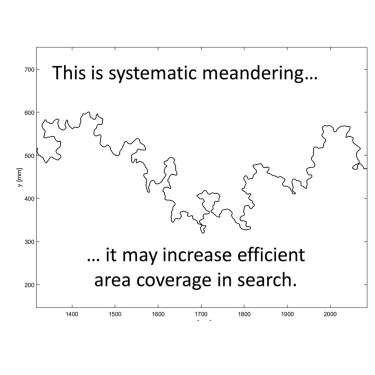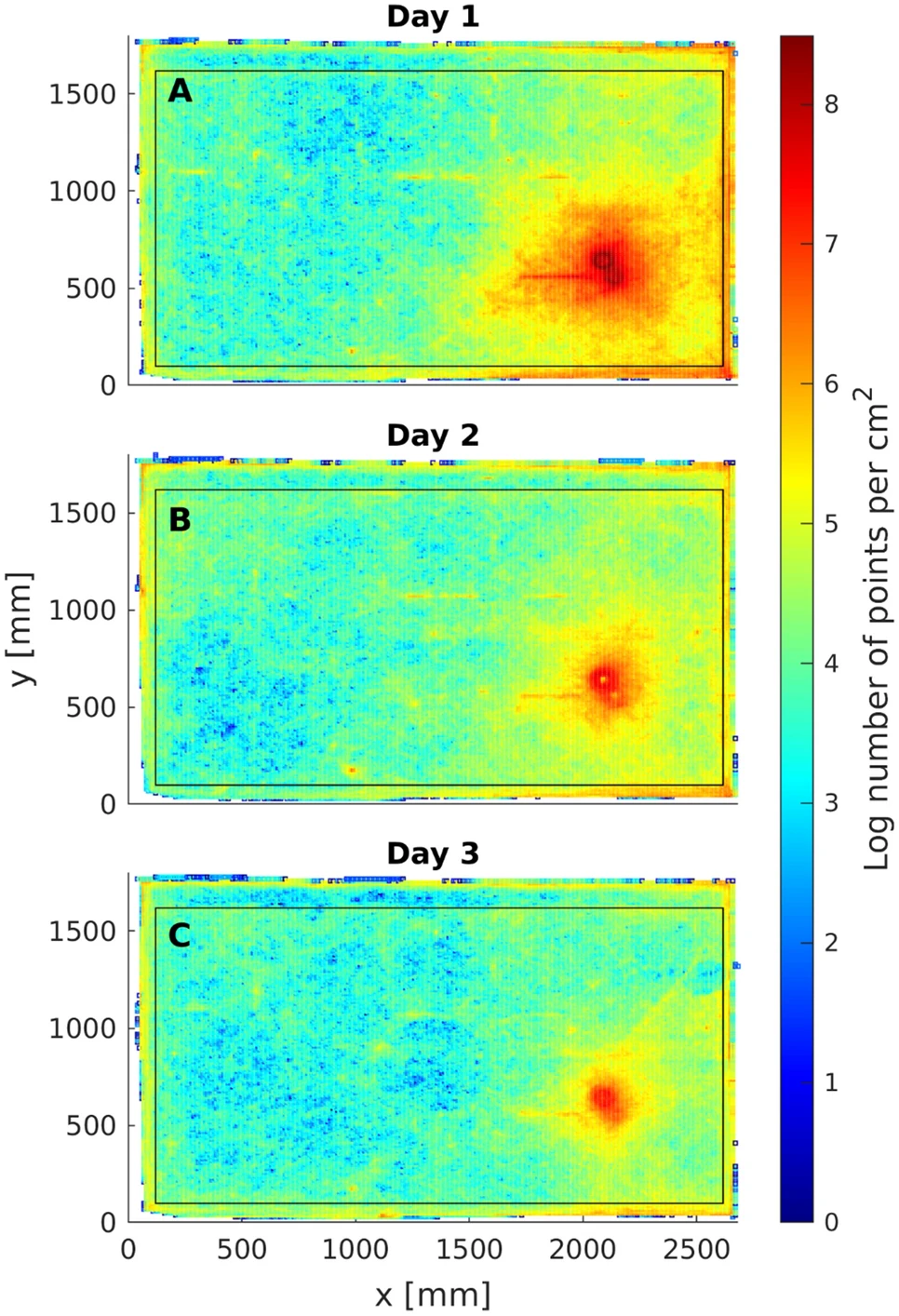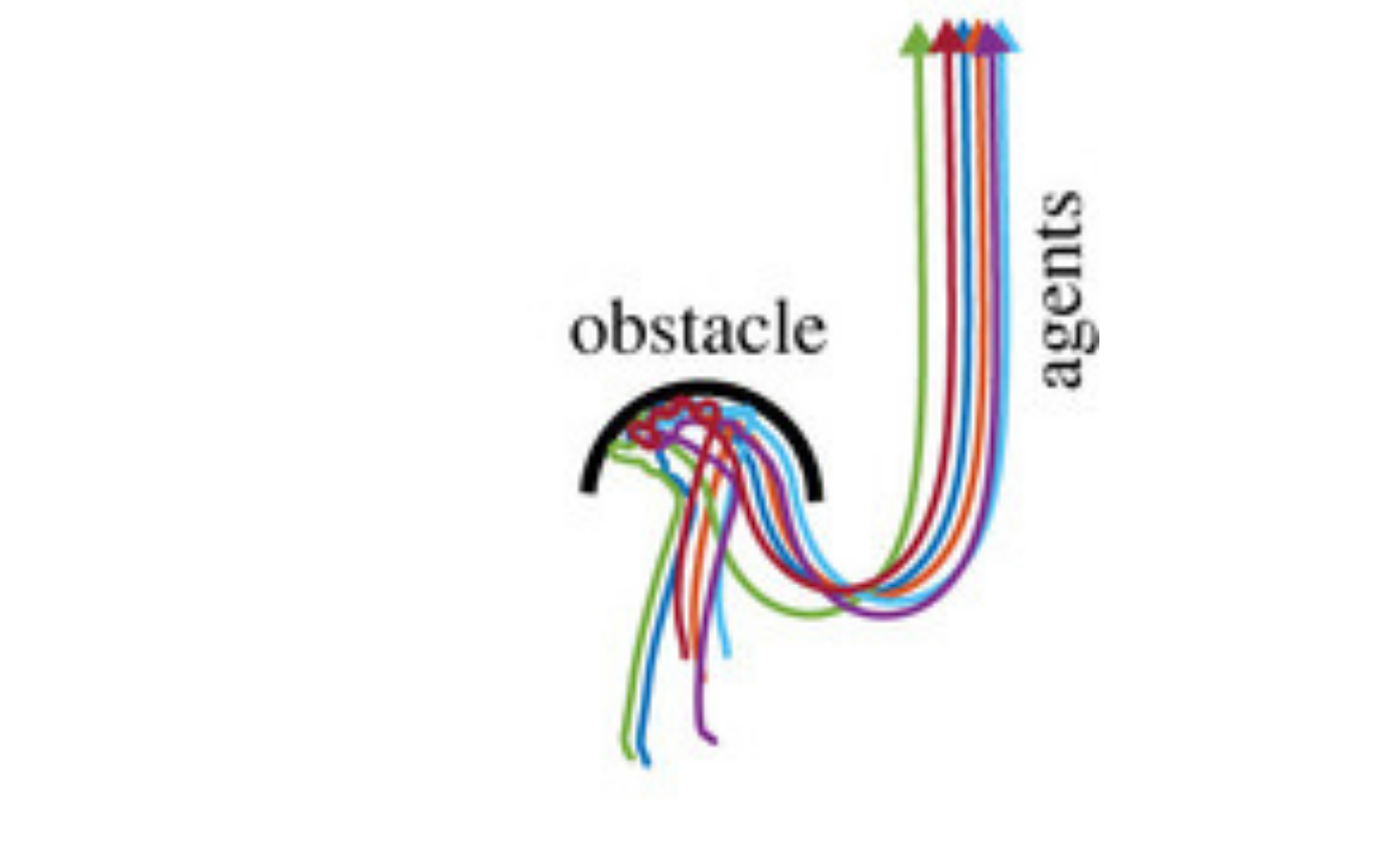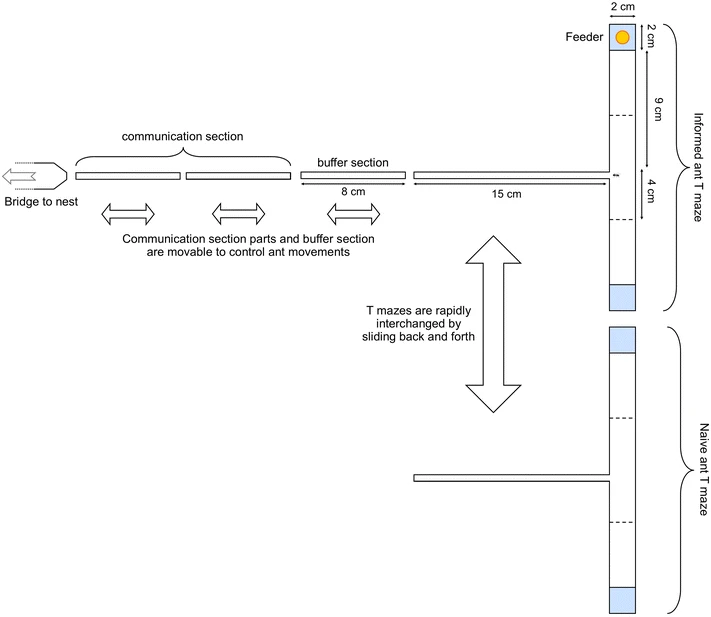publications
Publications by categories in reversed chronological order.
2023
-
 Ants combine systematic meandering and correlated random walks when searching for unknown resourcesStefan Popp , and Anna DornhausiScience, Jan 2023
Ants combine systematic meandering and correlated random walks when searching for unknown resourcesStefan Popp , and Anna DornhausiScience, Jan 2023Animal search movements are typically assumed to be mostly random walks, although non-random elements may be widespread. We tracked ants (Temnothorax rugatulus) in a large empty arena, resulting in almost 5 km of trajectories. We tested for meandering by comparing the turn autocorrelations for empirical ant tracks and simulated, realistic Correlated Random Walks. We found that 78% of ants show significant negative autocorrelation around 10 mm (3 body lengths). This means that turns in one direction are likely followed by turns in the opposite direction after this distance. This meandering likely makes the search more efficient, as it allows ants to avoid crossing their own paths while staying close to the nest, avoiding return-travel time. Combining systematic search with stochastic elements may make the strategy less vulnerable to directional inaccuracies. This study is the first to find evidence for efficient search by regular meandering in a freely searching animal.
-
 Ant colonies explore novel environments with more slower, curvier walks, particularly near the nestStefan Popp , and Anna DornhausInsectes Sociaux, Oct 2023
Ant colonies explore novel environments with more slower, curvier walks, particularly near the nestStefan Popp , and Anna DornhausInsectes Sociaux, Oct 2023Central-place foragers must learn the resource and visual landscapes around them when they are in a new environment, to facilitate efficient foraging and navigation. We investigated how the colony-level exploration strategy of Temnothorax rugatulus ants changes over time. For this study, we introduced ants to a novel environment by placing them in a foraging arena and tracking their movements over 3 days for 5 h per day, prohibiting access to the arena at other times. To test whether any changes in movement behavior are due to chemical markings, we replaced the paper floor on the third day. We found that colony-level exploration activity decreased with time, but only within a roughly 1 m radius around the nest, possibly reflecting a shift from familiarization or marking walks to searching. Individuals’ movements overall also became slightly straighter and faster across and within days. However, unlike learning walks of other ant species, T. rugatulus ants did not pause more often when facing toward the nest. Reactions to chemical markings seem to play a minor role in our observed effects, as the exploratory behavior did not reset after the floor cover had been replaced. Thus, ant colony exploration and search behaviors adapt to the familiarity of their environment by becoming more dispersive, possibly aiding in search efficiency. This must be considered in lab studies on the foraging activity and behavior of ants.
2022
-
 Alignment with neighbours enables escape from dead ends in flocking modelsVarun Joshi , Stefan Popp , Justin Werfel , and 1 more authorJournal of The Royal Society Interface, Aug 2022
Alignment with neighbours enables escape from dead ends in flocking modelsVarun Joshi , Stefan Popp , Justin Werfel , and 1 more authorJournal of The Royal Society Interface, Aug 2022Coordinated movement in animal groups (flocks, schools, herds, etc.) is a classic and well-studied form of collective behaviour. Most theoretical studies consider agents in unobstructed spaces; however, many animals move in often complicated environments and must navigate around and through obstacles. Here we consider simulated agents behaving according to typical flocking rules, with the addition of repulsion from obstacles, and study their collective behaviour in environments with concave obstacles (dead ends). We find that groups of such agents heading for a goal can spontaneously escape dead ends without wall-following or other specialized behaviours, in what we term ‘flocking escapes’. The mechanism arises when agents align with one another while heading away from the goal, forming a self-stable cluster that persists long enough to exit the obstacle and avoids becoming trapped again when turning back towards the goal. Solitary agents under the same conditions are never observed to escape. We show that alignment with neighbours reduces the effective turning speed of the group while letting individuals maintain high manoeuvrability when needed. The relative robustness of flocking escapes in our studies suggests that this emergent behaviour may be relevant for a variety of animal species.
2018
-
 No evidence for tactile communication of direction in foraging Lasius antsS. Popp , P. Buckham-Bonnett , S. E. F. Evison , and 2 more authorsInsectes Sociaux, Feb 2018
No evidence for tactile communication of direction in foraging Lasius antsS. Popp , P. Buckham-Bonnett , S. E. F. Evison , and 2 more authorsInsectes Sociaux, Feb 2018The idea that ants communicate when meeting on a trail is beguiling, but evidence for this is scarce. Physical communication in ants has been demonstrated to play a role as a modulator of behaviours such as alarm and recruitment. Honeybees can communicate the location of a resource using an advanced motor display—the waggle dance. However, no equivalent of the waggle dance has been described for any ant species, and it is widely believed that ants cannot communicate the location of resources using motor displays. One group of researchers report several demonstrations of such communication in Formica ants; however, these results have been largely ignored. More recently some evidence arose that Lasius niger foragers returning from a food source can communicate to outgoing foragers the direction that should be taken at the next bifurcation by means of physical contact on the trail. Here, we make a concerted effort to replicate these results. Although initial results seemed to indicate physical communication, once stringent controls to eliminate pheromone cues were put in place, no evidence for physical communication of food location could be found. This null result was replicated independently by a different research group on a closely related species, L. neglectus. We conclude that neither L. niger nor L. neglectus foragers communicate resource location using physical contact. Our results increase the burden of proof required for other claims of physical communication of direction in ants, but do not completely rule out this possibility.